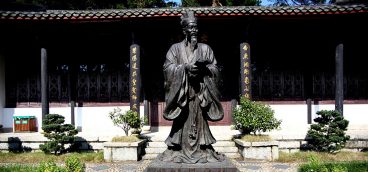An Idea Whose Time Has Come

One reason why people haven’t bothered to write “The Art of Peace,” at least in recent decades, might be because, well, who needs it? Why attack the problem of peace intellectually when we’ve already—very successfully—achieved peace by simply muddling through?
By “peace” I don’t mean “the total absence of armed conflict”—good luck with that. I mean the absence of total war. Total war involves the prospect that your civilization will be crushed by another civilization and their system imposed on you.
Under this definition, America has fought only four and a half total wars in nearly 250 years: the Revolutionary War, the War of 1812 (sort of, the Brits captured Washington, D.C. and set fire to the White House and Capitol Building, but retreated a day later), the Civil War, World War I and World War II.
All our other armed conflicts, of which there were a great many, were what I’ll call for shorthand “proxy wars,” that is, wars not fought directly against an opponent powerful enough to defeat us and impose its will on us.
For example, Korea, Vietnam, Iraq I, Iraq II, and Afghanistan have all been proxy wars, with the real enemy (Communism and radical Islam) not directly attacked.
Thus, discounting proxy wars for the moment, America and its Western European allies have enjoyed what many call The Long Peace. Germany and Japan surrendered in 1945 to end our last total war, and (so far) we’ve enjoyed 75 years of peace—one of the longest periods with no total war in human history. (The twentieth century, by contrast, endured two total wars within 21 years.)
So why bother with “The Art of Peace”? Simply because, the more a terrible event recedes into the distance, the more we believe it won’t ever happen again—which makes it a lot more likely to happen.
Consider pandemics. Until recently, the last pandemic America endured was the Spanish Flu (which almost certainly didn’t originate in Spain) back in 1918. After so many decades of pandemic-free life, we stopped worrying about pandemics. That made it a virtual certainty that a) another pandemic would strike and b) we would be completely unprepared for it. Which is just what happened.
Pandemics can be catastrophic, of course—50 million people likely died globally in the 14-month pandemic in 1918, slightly more than died in World War I. But more typically the death tolls are much lower. So far, only slightly more than one million people have died globally in the (to-date) twelve-month COVID pandemic.
But total wars are always catastrophic. Forty million died in World War I, 85 million died in World War II, and during the Civil War the U.S. (North and South combined) lost a full 2 percent of its population. Today, that would be equivalent to almost seven million American deaths.
And there’s another problem with just enjoying our Long Peace and not worrying about total war: You never know when a small proxy war will get out of hand and plunge us into a total war.
In the nineteenth century, Otto von Bismarck, operating out of Prussia, fought a series of relatively small, short wars, mostly against then-independent duchies, but also against Austria and France. The result was the unification of Germany under Prussian leadership and also the widespread belief among European political and military leaders that wars could be contained.
This idea was reinforced early in the twentieth century when the Bosnian Crisis of 1908–09, the First Balkan War (1912) and the Second Balkan War (1913) all proved to be short-term affairs that didn’t spread beyond the belligerents.
Thus, when an obscure Serb named Gavrilo Princip assassinated the Austrian Archduke Ferdinand, no one was at first much agitated about it. The people of Austria didn’t consider it a big deal, and the Archduke and the long-serving Emperor, Franz Joseph I, weren’t close.
Still, the event had to be dealt with politically, and Austria issued 10 demands to the Serbs. The Serbs accepted all but one, but Austria was determined to punish Serbia, believing (correctly) that Serb officials, and especially the Black Hand, had been involved in the assassination plot.
Soon the two nations were at war in what most Europeans, harking back to Bismarck and the earlier Balkan conflicts, believed would prove to be a short-lived dustup. Instead, a cascading series of events, including interlocking treaty obligations, misunderstandings, and miscalculations plunged the world into total war.
And finally, while there will likely always be proxy wars, we want to minimize them as far as is practicable. Those wars don’t endanger the state, but it would be difficult to explain their relative unimportance to the men and women who served in them—or died in them.
Having thus convinced myself that someone—and why not Your Humble Blogger?—should write about “The Art of Peace,” how should we go about it? One way is to start with “The Art of War” and write a mostly analogous treatise focused on peace.
After all, Sun Tzu didn’t invent an entirely new philosophy that could only be applied to war. What he did was to adopt the prevailing philosophical approach of his day—a form of Taoism—to the problem, of war.
I should pause here to note that Sun Tzu’s Taoism wasn’t (or wasn’t entirely) the Taoism of Lao Tzu. Sun Tzu likely died several decades before Lao Tzu wrote the “Tao Te Ching,” the classic Taoist text.
But Taoism grew out of the ancient folk religions of China, and Sun Tzu’s philosophical approach in “The Art of War” is quite similar to Lao Tzu’s approach in the “Tao Te Ching.”
Thus, since “The Art of War” has stood the test of time for 25 centuries, I will use it as my guide in penning “The Art of Peace.” That should ensure that my blog will last until at least the year 4520.






